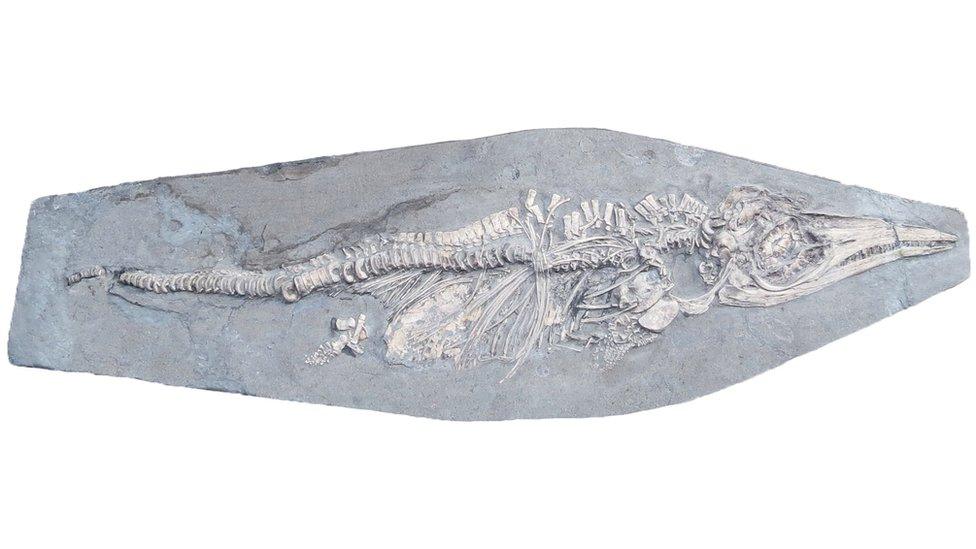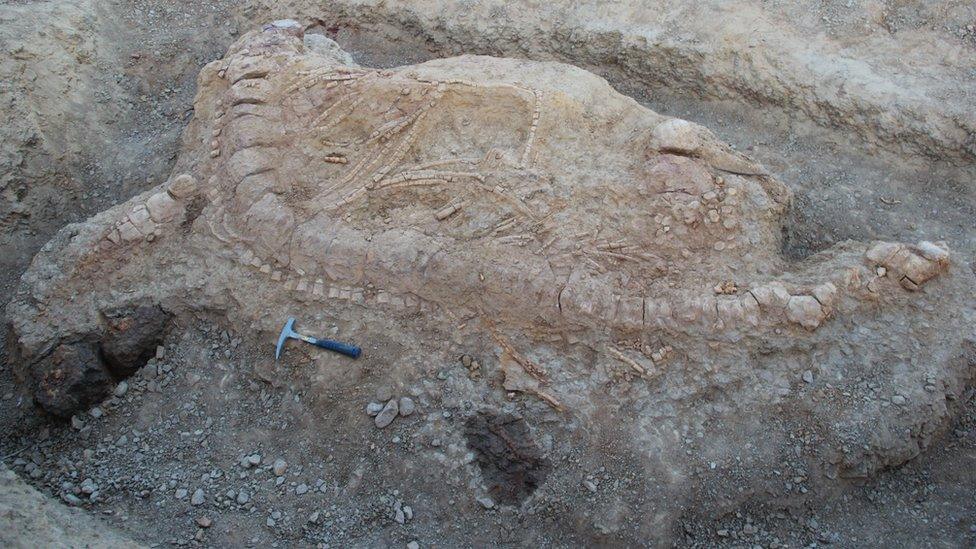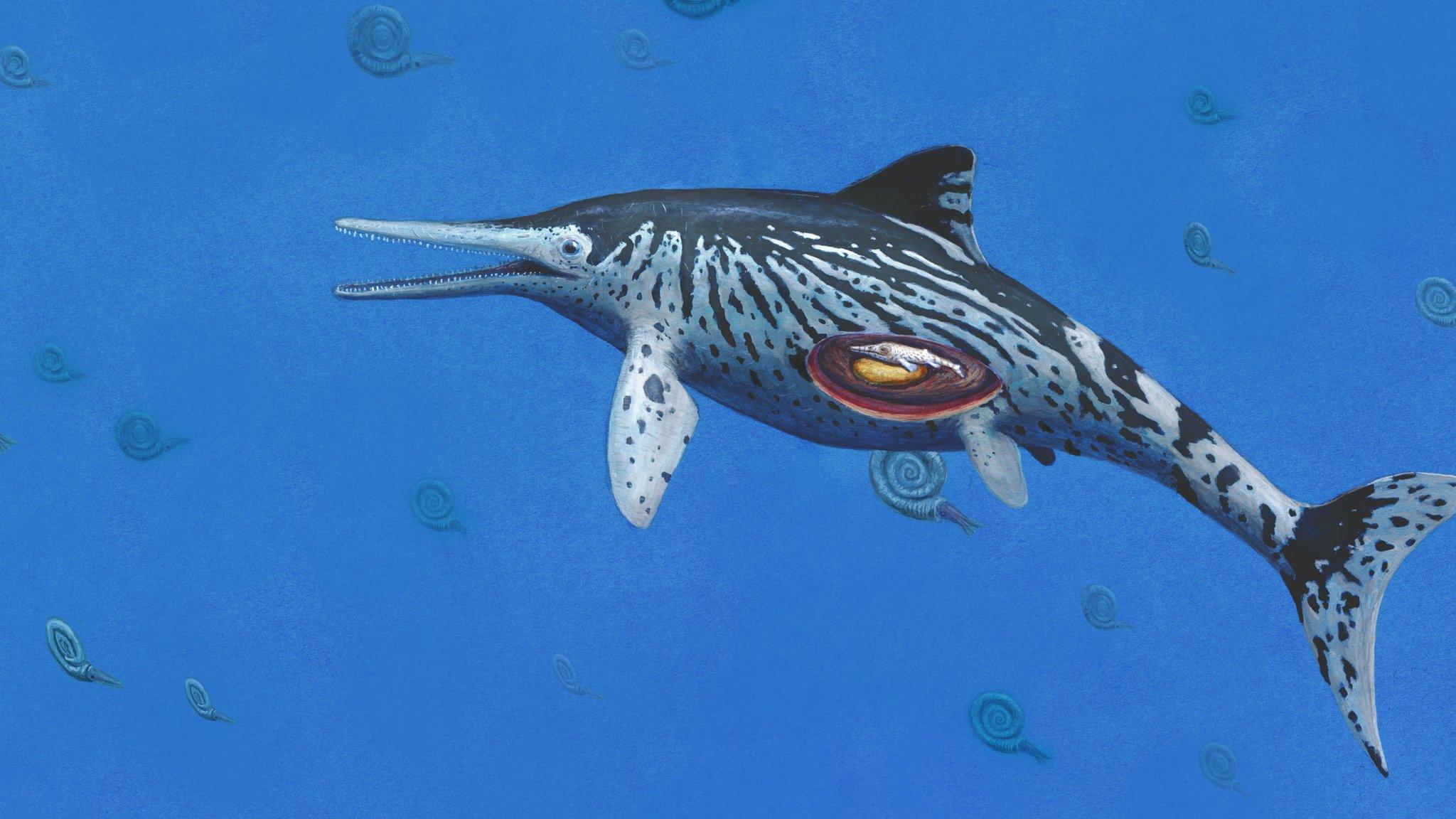'Pregnant mum' fossil theory confirmed
- Published

An artist's impression of how the ichthyosaur may have looked
The remains of a 180-million-year-old ichthyosaur have revealed the marine reptile was a pregnant mother, scientists have found.
Up to eight tiny embryos were identified between its fossilised ribs, the University of Manchester said.
Experts studied parts of the Jurassic specimen found near Whitby, North Yorkshire, in 2010. It has since been housed at a museum in York.
Dr Mike Boyd said he initially thought the embryos could be stomach contents.
But he, along with fellow palaeontologist Dean Lomax, thought it seemed "highly unlikely that an ichthyosaur would swallow six to eight aborted embryos or newborn ichthyosaurs at one time".
"This does not seem to have been the case, because the embryos display no erosion from stomach acids," said Dr Boyd.
"Moreover, the embryos are not associated with any stomach contents commonly seen in Early Jurassic ichthyosaurs, such as the remains of squid-like belemnites."

The Whitby specimen contains up to eight embryos
Ichthyosaurs were dolphin-like carnivorous aquatic reptiles that gave birth to live young rather than laying eggs. They were once common in UK seas and many of their fossils have been found in British Jurassic rocks.
However, only five ichthyosaur fossils have been found containing embryos, mainly in the south-west of England.
The Whitby specimen, which contains the most embryos of any yet found in Britain, consists of a small boulder, cut in half exposing several large adult ribs and several strings of vertebrae and tiny bones.
The fossil was in the possession of collector Martin Rigby, who thought the specimen might be a block of embryos, before it was acquired by the Yorkshire Museum where it is on show as part of a major exhibition entitled Yorkshire's Jurassic World.
Eight different species of ichthyosaur have been found to contain embryos, including more than 100 specimens from Germany.
The number of embryos associated with a single mother ranges from one to 11.
- Published25 October 2017

- Published28 August 2017
